Above: Bullrushes © John Rawles
Leaders: Clare Herbert and John Rawles
13 members joined the leaders at Eagle House, Northend, braving thunderstorms threatened after the recent heatwave. As it transpired, we only had to suffer occasional gentle showers, which were quite refreshing.
On the way to the Nature Reserve we passed a Sequoiadendron Giganteum which, we believe, was part of parkland attached to Eagle House.
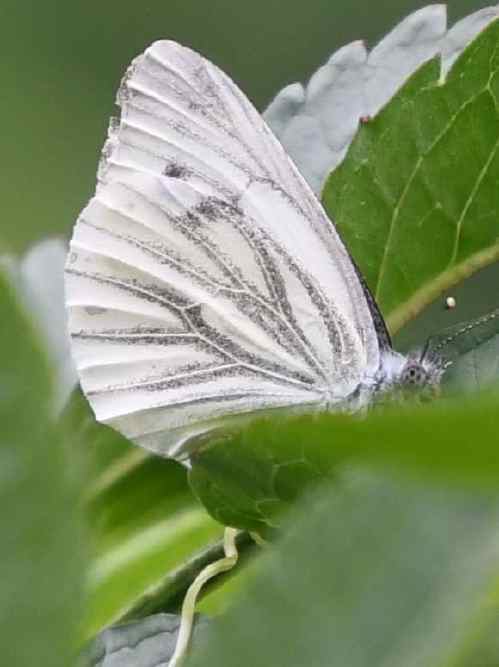
Green-veined White © John Rawles
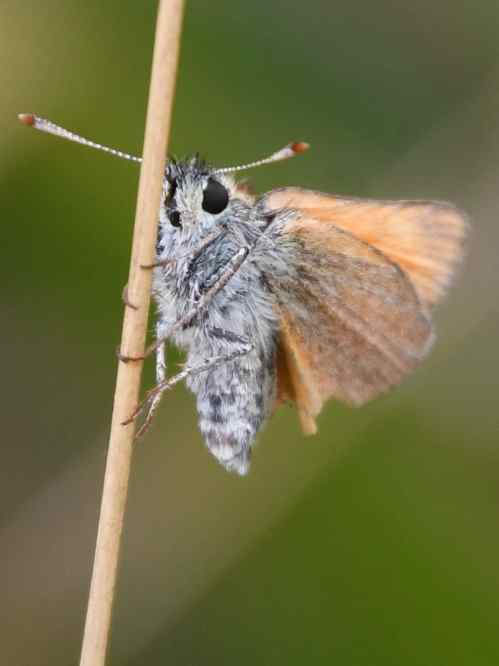
Small Skipper © John Rawles
The weather meant that few birds and insects were on display but keen eyes soon spotted Green-veined Whites, Speckled Woods, Common Blues, Small Skippers, and Gatekeeper butterflies along with various moths and micro moths which included Cranbid Snout Moth and a Mint Moth (appropriately settled on a mint leaf). Meadow Grasshoppers were abundant.
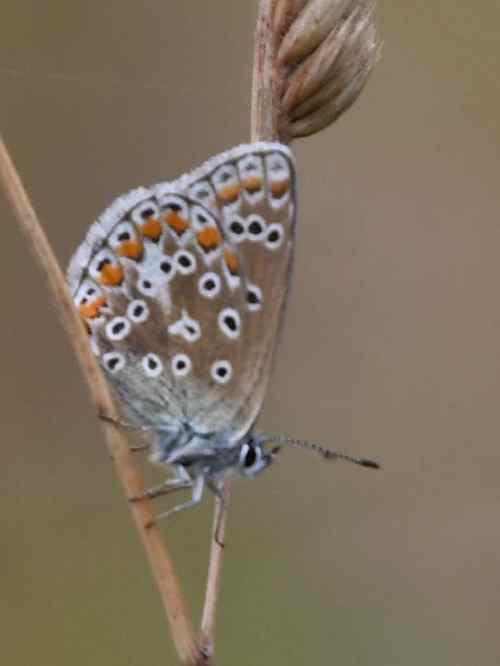
Common Blue © John Rawles
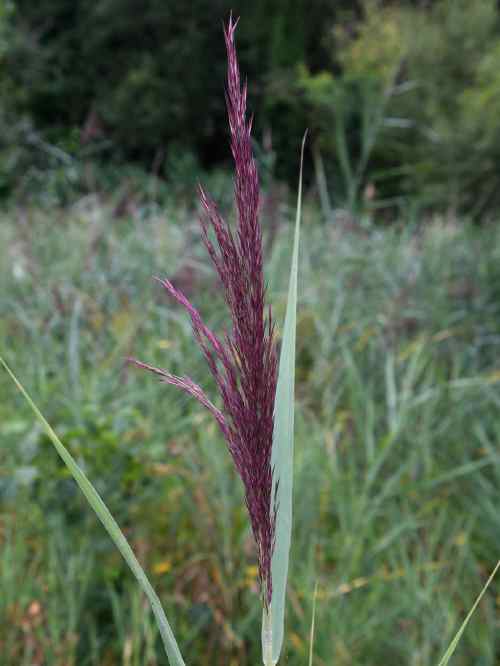
Common Reed © John Rawles
A Green Woodpecker was glimpsed and the occasional Buzzard circled overhead. Swallows were also seen, and a Reed Warbler was heard.
Being the site of a former reservoir, several young frogs were spotted.
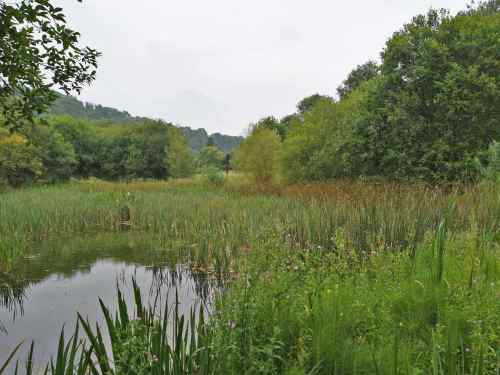
Chilcombe Bottom NR © John Rawles
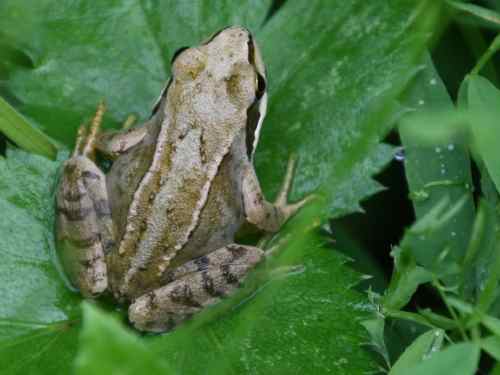
Baby frog © John Rawles
The vegetation at the Chilcombe Bottom Nature Reserve seemed relatively unaffected by the recent dry spell, so many species of plants were identified. These included, Agrimony and Hemp Agrimony, Horsetail (Equisetum arvense), Meadowsweet and Bullrushes – widespread around the reservoir – Common Fleabane, Angelica, Sneezewort, Greater Knapweed, Water Mint, Yellow Sweet Clover, Upright Hedge Parsley, Water Horehound, Bristly Oxtongue, Burdock, Hedge Woundwort, Ribwort Plantain and Greater Plantain, Dotted Loosetrife, Snowberry, Water Figwort, Sow Thistle, Nipplewort, Common Lambsquarters, and Persicaria Maculosa.
Incidentally, several members commented on how lovely the reserve was and some – having discovered it for the first time – are considering return visits. Gloworms and a Barn Owl have been seen there during previous evenings.
Clare Herbert and John Rawles


Recent Comments